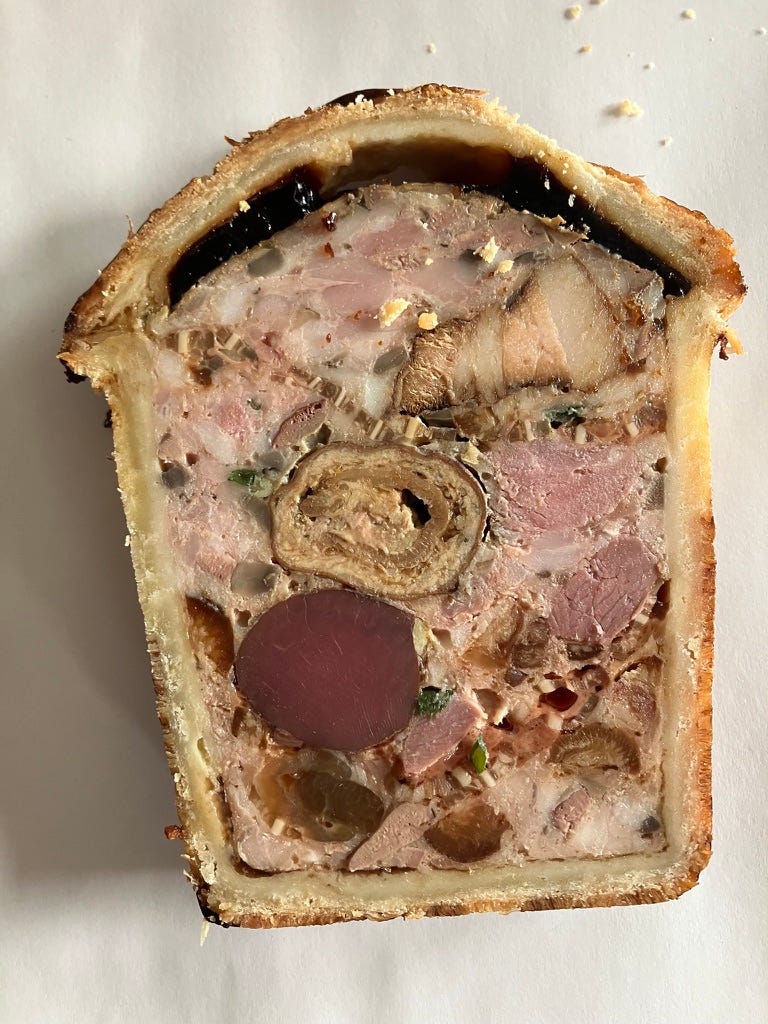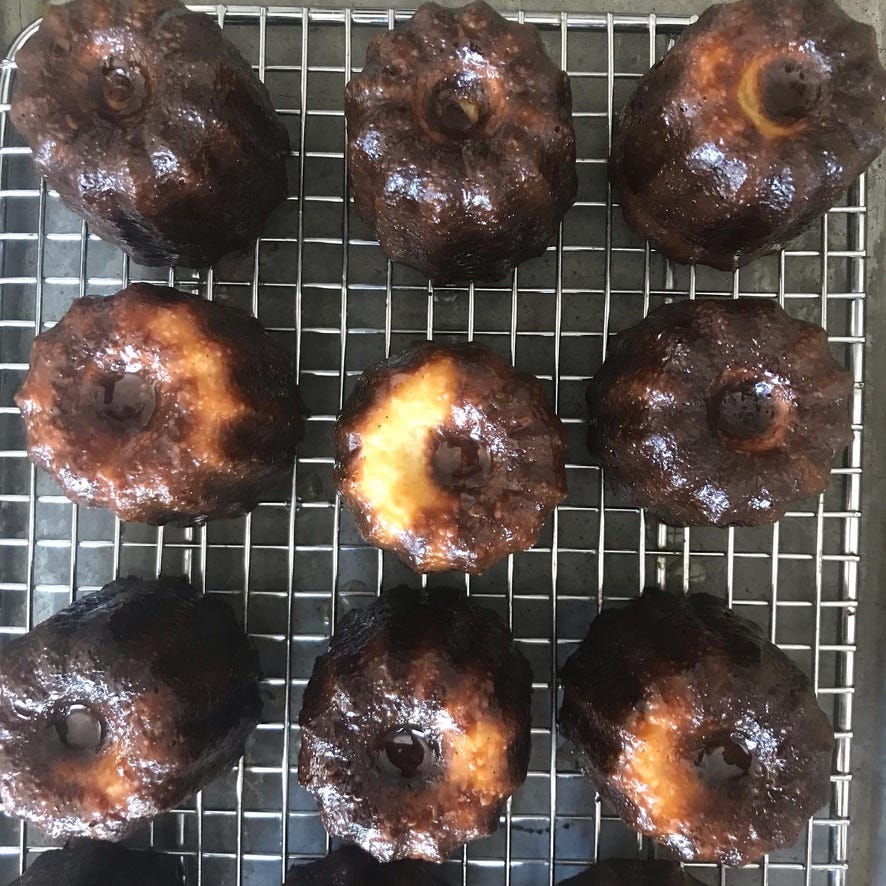Because I don’t write on a standard workweek schedule, any day can feel like hump day, especially when, as now, I’m working through two long-form pieces at once. I was surprised to learn that long-form isn’t actually writer’s parlance for “any piece that’s taking much longer than you thought it would.” So this issue’s a cobbling together of bits and bobs, an amuse-gueule until the first of those long-form pieces arrives on Labor Day (the wikipedia entry on amuses-gueules is well worth your time).
This was the most recent pâté-croûte I made. It was slightly imperfect. I have another two croûtes in progress right now, and will be serving them, and canele, at a pop-up at Backbar tomorrow, from 5-9pm. Ask the bartender for a fitty-fitty with your slice.
The other item on the menu at tomorrow’s pop-up is canele, which might be my favorite form of pastry. They’re also incredibly finicky, though I’m not sure if there’s a causal relationship between these things. My preferred pairing with a canele is something bitter and aromatic, but without a lot of citrus. You really want the experience to focus on the contrast between the crust and the custard, and citrus is a third wheel in that interaction.
Guess which ones aren’t quite perfect.
We were in Bordeaux, land of the canele, this spring. The canele were utterly uninspiring (perhaps I shouldn’t have been surprised). The crusty ones lacked flavor, the flavorful ones lacked crust. The best canele of the trip was in Bilbao. The most striking thing about Bordelais canele was their uniformity. Every canele merchant in the city – and this is a city where there are literally more places to get a canele than a Big Mac – had phalanxes of canele lined up in their window. While there was variation between the stores, every canele in a single shopfront would be nearly the same shade, and white arses (as the Bordelaise call the flaw in the photo above) seemed improbably rare. Perhaps there were giant bins of discards just out of sight.
The dominant seller is a company called Baillardran, who’ve peppered the city center with a dozen kiosks or more, each equipped with its own baking station. The counter service at these places is fast-food perky, and incongruous with the window dressing, in a style I think of as Barbie Antoinette. Working at a Baillardran is clearly a first-job-during-high-school kind of proposition, and at some of these counters, the people handing out the canele also seemed to be the people doing the baking, which means that the company has process-engineered their canele to the point where high schoolers can produce sheets of these things without an unacceptable loss rate. This seems miraculous to me, especially since the Baillardran canele was probably the best one we had in Bordeaux. Imagine if the best burger in your city came from McDonald’s. I don’t know if this would be a matter of civic pride or civic shame.
Baillardran’s “real vanilla, no alcohol” version. Leathery crust, full flavor, good crumb.
Canele are traditionally cooked by burying the copper cups in the remains of a fire that’s neither quite embers nor ash. I’ve done this a few times, and it was just bloody impossible to get the heat as even as I needed. Maybe with a massive hearth and the remains of a bonfire, I could have made a layer cake of embers and ash that gave me an even bake, but if your heat is at all uneven, you find yourself trying to control the bake by digging around in embers to manipulate scorching hot cups of liquid custard.
Don’t try this at home. Instead, come eat canele baked with modern technology tomorrow – they’re better than the ones you get in Bordeaux.
Finally, in case this issue wasn’t grumpy enough for you – a classic diatribe about working under the sign of the golden arches. “If Upton Sinclair had worked at McDonald’s,” one reader said.







Oh man, your caneles are so good. Wish I was in Boston.